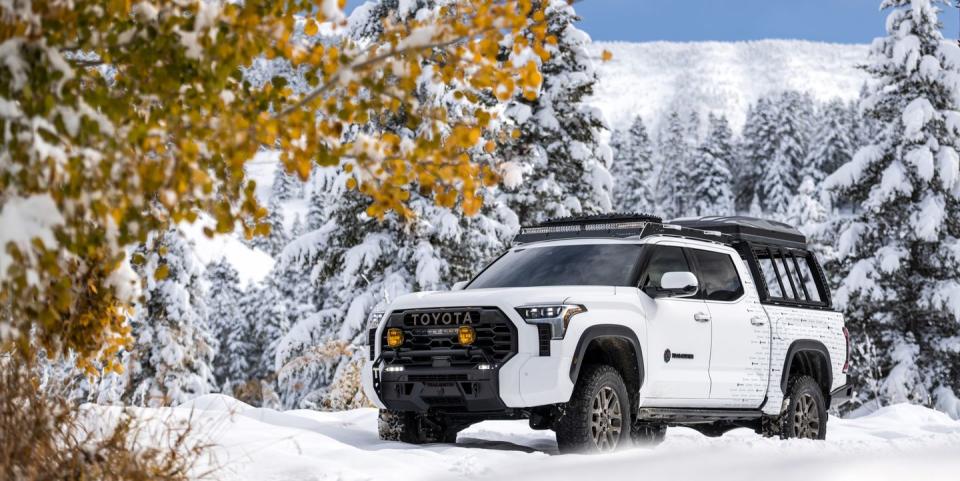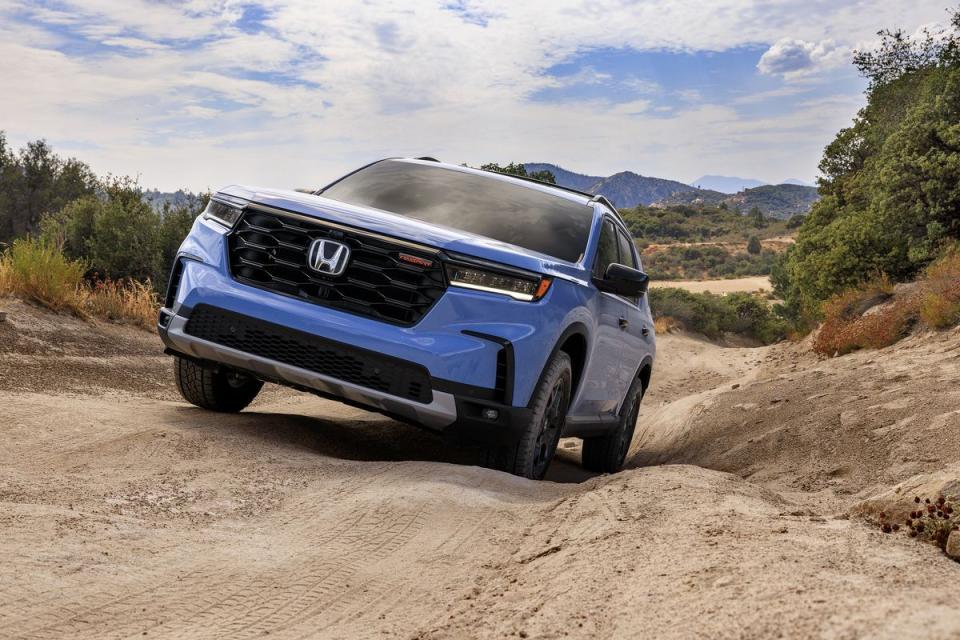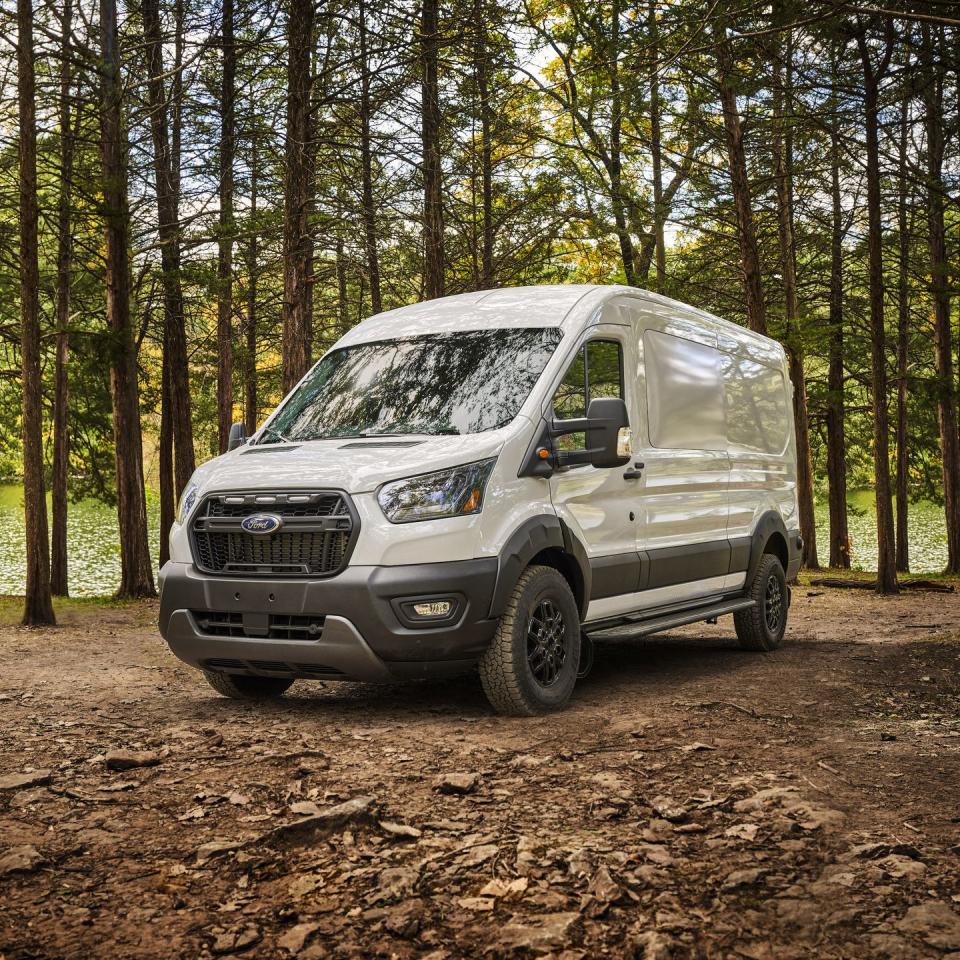Automakers Are Finally Catching on to the Overlanding Trend

The COVID-19 pandemic has sparked a revolution in the outdoor community. Sick of home and unable to leave the country, Americans discovered the amazing potential of the country’s wilderness en masse. That’s spilled over into the car world, where overlanding setups have been the hot commodity for the better part of three years. At long last, it seems like automakers have caught on.
Over the past year, we’ve seen the introduction of countless adventure- and outdoor-oriented models, trims, and accessory packages. From a market that was originally dependent on low-volume Land Cruisers and ultra-modded pickups has grown a trend so strong that even the three-row, minivan-like Honda Pilot is being advertised as an off-the-grid solution.

Such marketing betrays the opportunism involved in latching on to a new trend. Surely no Pilot is going to get too far into the backcountry, but then, neither will a stock Subaru Outback. Like with any other trend, many companies are selling the the idea of adventure rather than designing a tool to enable adventure. But make no mistake, the increased focus on overlanding is paying serious dividends for genuine enthusiasts. In fact, in the last few months alone, I can name three examples that will seriously change the market for good.
The first is the Ford Transit Trail, a #VanLife-targeted rig from the country’s biggest vanseller. Strictly speaking, there’s nothing on it that you couldn’t get relatively cheaply and easily on the aftermarket before. It takes an all-wheel-drive Transit and adds a lift, an optional vent fan, all-terrain tires, and additional power outlets.

None of that sounds transformative. In the real world, it will be. Because the small improvements of the Transit Trail mean you can now buy a Transit from a dealership and outfit it for relatively serious adventures without having to cut any panels, run any wires, or put it on a lift. With a set of tools you can get at any hardware store, you can build a live-in rig with some ability to power gadgets, stay cool, and traverse unmaintained gravel roads.
Serious adventurers will still be better served by building a proper electrical system with a separate battery and solar panels, installing running water, and possibly an auxiliary heater. But if you’re tipping your toe in, a Transit Trail with a mattress, a good cooler, and some department-store storage bins will handle a four-day fair-weather trip without a sweat. It won’t be the most luxurious, the most long-term, or the most streamlined way to live the VanLife, but you’ll be able to learn for yourself which one of those things you want to maximize for. I love spending time in the wilderness, for instance, but it took spending 30-some days under the stars this year to learn that I get more from a 3-day camping trip than I do from an 8-day excursion.
In fact, before spending tens of thousands of dollars on an adventure rig, I recommend first finding out if you like adventures as much as you think you do. Seven days tent camping out of a minivan taught me that after a year of constant travel, I don’t have any desire to spend a week away from my own home in the coming months. Instead, I want to scratch my adventure itch by having shorter, harder adventures. What I believe is the best adventure car is the one that can get me and one to three other people to a trailhead, with our backpacks, for a three-day backpacking adventure. And thanks to Mazda, for the first time ever, people searching for that exact thing have more than one option.

Until now, you just had to buy a Subaru Outback. That’s fine, but any segment is infinitely better with two players. Honda and Toyota have tried to sell the Passport and RAV4 to adventure-oriented audiences, but neither looks or drives like anything but a forgettable, sensible crossover. Mazda, with its CX-50, has managed to capture the rugged but reasonable charm of the Outback in a similarly sized package that, we discovered, is actually engaging to drive. It’s long enough to sleep in, if that’s your jam, and offers a bunch of accessories. Many are nonsense, but like Subaru, Mazda realizes the two things worth pushing: Good roof racks and good roof boxes. With an Outback or a CX-50, you can reach more breathtaking trails than any one human could hike in a lifetime. Drive there, cover the hard terrain on your feet, and sleep on peaks no truck could ever reach. Expecting the comfort of a climate controlled truck or the convenience of a fridge following the same line of reasoning that lands people in hotels. It’s not technically overlanding; it’s better.
For those that want to reach hundreds of miles past where the pavement ends, though, there is no replacement for a well-built truck. More specifically, there’s a large segment of believers that there’s no replacement for a well-built Toyota truck, specifically. The Tacoma, Tundra, 4Runner, and Land Cruiser have been primary choices for American overlanders since their respective introductions, even against more technically capable alternatives, thanks in large part to legendary reliability. The trucks all have incredible aftermarket support for every overlanding need, but soon they’ll have factory backing for key components, too.
At SEMA, Toyota rolled out its Tundra Trailhunter Concept. Given the aftermarket focus of the show and the accessories all over the truck, it was easy to dismiss as another irrelevant demo piece. It’s much more than that. It’s the announcement of Toyota’s upcoming overlanding trim, Trailhunter, which is bound to end up on the Tacoma and 4Runner as well. Details are scarce, but Toyota says it will focus on off-road capability, protection from damage, and gear-carrying ability, three categories crucial to any build.

The factory tweaks will be welcome. The more important part, though, is the slate of overlanding accessories Toyota will start selling at dealerships to support builds. We don’t have a catalog yet, but the concept had a fridge, bed rack, and roof tent. If a person can purchase high-quality tents, fridges, off-road upgrades, skidplates, bumpers, racks, and fridges at the dealership and roll it into their financing, that puts serious capability within reach of people who don’t have the specialized knowledge to find high-quality aftermarket bits on their own.
The downside is that it risks inflaming overlanding’s biggest crisis. Like all high-dollar hobbies, overlanding attracts people who over-emphasize the importance of gear and under-emphasize experience. Researching high-quality components, knowing which upgrades are worth the money, installing upgrades, jerry-rigging solutions, and pushing the limits of yourself and the rig are all key things that make overlanding great.
Buying something that solves most problems for you deprives you of the opportunity to solve them yourself. So if you want to experience what automotive adventuring is really about, you don’t need to buy a different vehicle. Budget $500. Take the car, truck, or van you already have, throw a tent and a sleeping bag in it, and take it as far from civilization as it can physically get. Given how much staggering, empty beauty is accessible from dirt roads in this country, I promise you’ll give up before the car does.
You Might Also Like

 Yahoo Autos
Yahoo Autos 